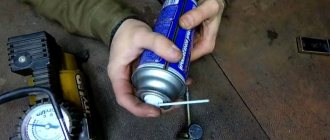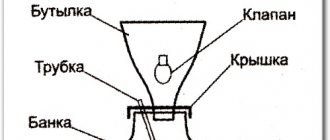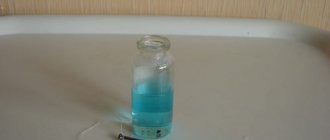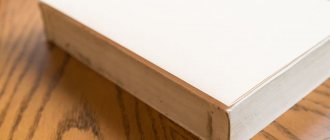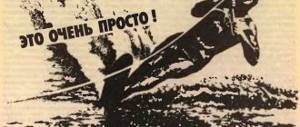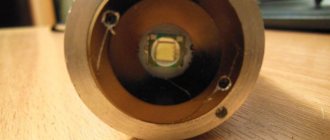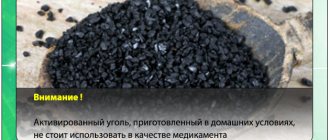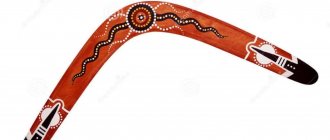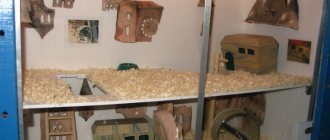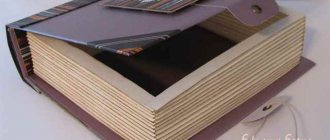How to Apply Chalk Paint to Wood
As with any painting, the first stage is surface preparation.
Preparation for painting includes the following steps:
- We remove old paint, varnish and other coatings from the surface. Varnish and paint can be removed with sandpaper, a grinder or chemicals. Depends on the coverage and your preferences in choosing products.
- After removing the old coating from the surface, it must be treated with a soap solution. To remove as much dirt and dust as possible.
- After washing, we go through sandpaper with a grain from higher to lower, finishing with 230 grain. This is necessary to give a slight roughness, to improve the adhesion of the paint and the surface. We wipe the surface again from dust. Which was formed from grinding.
- Next, degrease the surface (optional step)
- We are waiting for the prepared surface to dry completely.
Chalk paint - methods of application
In most cases, chalk paint is used to cover furniture. However, this group can also include products that can be used to coat not only wood and MDF, but also plastic, metal, leather and fabric. This is a very intriguing offer for people tired of worn-out upholstery or curtains.
Chalk paint for painting fabric
To paint fabrics and upholstery furniture with chalk paint, you need wax, which “covers” the finished surface and protects it from abrasion; in addition, it will protect the fabric from dirt. Coating fabric with such compositions is usually done with pleasure, and the work does not cause any problems. The paint perfectly covers smooth fabric, as well as structured and leather. It is better to cover structural fabric with a brush, because in this case the paint penetrates better into the recesses in the material
It is also important to saturate the fabric in advance, for example, using a spray bottle
Chalk compositions for decorating fabric are available in a fairly wide range of colors. The colors can also be combined with each other to create other shades. It is recommended to dilute the paint with water before application. The product is then applied in two layers at intervals of about 1 hour. After 24 hours you need to start waxing. Clear waxes can be applied using a brush or sponge. Thanks to them, the depth of the selected color becomes even more pronounced due to the effect of a polished surface.
Art painting of furniture
Such paints can also be used for hand-painting. They are great for decorating pieces of furniture, upholstery or plain curtains or blinds. With the right skills, the results can be very impressive.
Features of rust compositions
As is known, when using conventional paints and varnishes, a rather labor-intensive surface preparation process is required. If there are pockets of rust on it, then it is necessary to completely get rid of them and clean the metal to perfect purity, which involves a lot of time and hard, painstaking work.
A simpler and more rational option is paint with a rust converter, which not only greatly simplifies the process, but also replaces several solutions at once. This allows work to be carried out several times faster and guarantees high reliability of the finish and durability of the protective coating.
Many buyers believe that special paint is produced only by Hammerite, but this is a misconception. Many manufacturers produce similar formulations that are not inferior in quality, and their price is much lower. If a product has a quality certificate, this means that it has been fully tested, and there is no doubt about its properties.
Hammerite compositions are far from the only option on the market
Almost all types of protective solutions combine three main components:
- The anti-corrosion component allows you to stop the process of destruction of the metal structure that has already begun and protects it from the emergence of new foci of rust . Thanks to it, the surface does not need to be cleaned to perfection, which simplifies the work. As practice shows, the use of paints with a similar additive can increase the durability of the coating at least twice, which makes it possible to carry out painting much less frequently.
Protective composition of three components
- The primer is also an important part of the composition; it reliably covers the surface and protects it from moisture and other unfavorable components, and also significantly improves the adhesion of the composition to the surface, eliminating peeling of the coating due to temperature changes and deformation effects . The quality of the entire composition largely depends on the quality of the primer, so remember that good paint cannot be cheap.
- The third component is a synthetic compound of alkyd resins, which performs both decorative and protective functions . Thanks to it, the surface looks attractive and retains its properties for many years, and the presence of additives that make the paint resistant to ultraviolet exposure to the sun allows it to be used for both interior and exterior decoration of metal products.
Note. The use of such compositions is justified not only by their reliability, but also by a significant simplification of the technological process. You do not have to purchase separately a rust converter, primer and paint and carry out processing separately with each of these compounds; all work is carried out in one stage.
Master class on making a chalk board
Making a chalk board with your own hands if you have the necessary components is very simple, especially if the master has detailed instructions with clear illustrations at his disposal.
Tools and materials
For work you will need the following materials:
- glossy acrylic latex paint;
- fine granular component (one of those discussed in the previous section);
- container and stick for making the mixture;
- medium hard brush or roller;
- paper tape if you need to protect the edges;
- base for painting.
If the work will be carried out in a residential area, it is advisable to protect the workspace from accidental ingress of paint and varnish material. For this you can use oilcloth or old fabric.
Note! The paint color for the chalkboard is selected individually. The choice does not have to be limited to the black option
Chalk will be clearly visible on brown, burgundy, blue, green and any other dark surface.
To make a slate board, use a standard tool kit for painting work.
Main stages of work
- You can use any material as a base for the board: plywood, chipboard, fiberboard, MDF, natural wood or plasterboard. It is desirable that the base be smooth, without visible defects. Otherwise, you need to sand the surface using sandpaper. The same procedure (grinding) should be performed if the workpiece has a glossy finish. In order for the paint to have good adhesion to the surface, the gloss must be removed.
For this master class, the base chosen was an ordinary cutting board, which is available to any housewife.
- Chalkboard paint can be prepared using any of the methods listed above. Most often, a combination of latex paint with gypsum or tile grout is used for such purposes.
If the surface to be treated has a small area, you can prepare the finish in any available container
- The resulting mixture should be applied immediately after preparation, as it dries quickly. To ensure an even coating, brush movements should be fairly smooth.
To completely paint the workpiece, a 2-layer treatment is usually sufficient.
- Drying time for chalk paint ranges from 30 to 60 minutes. If everything was done correctly, the surface will soon become matte and velvety.
If there are visible irregularities, light sanding should be done using fine-grained sandpaper.
- Once dry, the slate can be tested for functionality by making a small note or sketching a fun design.
The colors of the chalk and board should be contrasting so that the inscription is clearly readable
What is slate paint and what are its features?
The designers made such a practical decision in interior matters. They were the ones who thought, why not paint a fragment of the wall or an entire part with it. You can leave sketches on it, and it is also a great solution for families with little artists who love to draw on vertical surfaces. School boards are painted with graphite paint, and manufacturers have long been producing different colors of this type of paintwork material.
What's included
The main component of the coloring composition is latex. The paint dissolves well in water. Additionally, the composition includes other natural substances that provide high wear resistance after complete drying. This can be marble chips, dolomite, cement, gypsum, acrylic or other modifiers.
The main component of the coloring composition is latex.
Advantages and disadvantages of the material
The main positive point is that the coating is absolutely harmless after drying. Therefore, paints and varnishes can be freely used for painting surfaces in schools and children’s rooms. It also has a number of additional advantages:
- High water resistance characteristics;
- Graphite wall paint is non-flammable and has sufficient fire resistance;
- The absence of toxins characterizes it as an environmentally friendly product;
- After drying, it does not emit any sharp, unpleasant odors;
- The paint is ideal for chalk on the wall, as after drying it creates a matte surface;
- Good level of adhesion. Sketches and other drawings, inscriptions on it do not fall off;
- Perfectly masks small imperfections on the surface.
Among the disadvantages is the high cost of the product, and there are also some points that do not allow its use.
The main positive point is that the coating is absolutely harmless after drying.
Paint and varnish materials in the household
The method of application and polymerization of some compositions, as well as the technology of coloring some materials, requires compliance with certain conditions. In order to deal with this issue, this article will consider painting with professional paint at home products made from various materials that are most often found in everyday life.
There will also be detailed instructions that describe in detail how to paint things at home, the principle of working with powder paints, as well as the technology for independently preparing a simple water-based paint composition.
Assortment of industrial acrylic paints.
Powder painting
The application of polymer powder paint is currently the most progressive method of painting parts made from materials that are not afraid of exposure to high temperatures. This coating is in many ways superior to most other paints and varnishes in its aesthetic qualities and performance properties.
We invite you to familiarize yourself with: Painting on glass with acrylic paints, technique for performing the work
Powder coating technology requires the use of special equipment, therefore it is most often used in industrial production conditions. However, if there is a large volume of work, painting with powder paint at home is quite possible if you equip a stationary station for applying powder coating in your own home.
Of course, a residential apartment is not suitable for this, but a garage or utility room of a private household will be just right.
Application of polymer powder.
It should be noted right away that the price of such a post will cost a considerable amount, so before purchasing you need to carefully consider the economic feasibility of this event.
As for the material and technical base, to perform such work with your own hands you will need to purchase the following set of equipment:
- Electric compressor for producing compressed air with a working pressure of at least 6 kg/cm² and a nominal capacity of at least 200 l/min.
- A special electrostatic gun for applying a thin layer of powder, which is sprayed using a directed stream of compressed air.
- Drying chamber for polymerization of powder coating, which ensures heating of the processed parts to a temperature of 250 - 300°C.
- Cyclone-type dust collector for powder recovery and air purification in the work area. As a last resort, you can use a powerful industrial (not household!) vacuum cleaner for this purpose.
The room for installation of equipment must be clean, spacious and bright, have direct access to the street, and also comply with fire safety regulations. Another condition is the presence of supply and exhaust ventilation.
Installation for manual powder application.
To paint building facades, gates, fences and other surfaces that have a large area, you will need to purchase a fairly large amount of paint. To reduce costs and save the family budget, you can make water-based paint yourself using available materials, which will not be inferior in quality to industrial designs.
Making your own paint at home begins with preparing a base base, which includes a binder, filler and water.
- Pour 10 liters of clean warm water into a plastic or metal container of suitable volume.
- Stirring constantly, pour 1.5 kg of PVA construction adhesive into the water in a thin stream, then mix thoroughly.
- Pour 6 kg of filler into the prepared solution, carefully sifted through a fine sieve. It is best to use dry titanium white as a filler, and if it is unavailable, you can use dry construction chalk.
- To increase the plasticity of the mixture and protect it from cracking, add 60 grams of washing powder to the resulting solution.
- Mix all components thoroughly, adding clean warm water until the required consistency is obtained.
The resulting white composition is well suited for painting surfaces made of wood, wood fiber and mineral materials. Water-based paint, after drying, forms a vapor-permeable film on the surface, which allows excess moisture to be removed from the material, while factory-produced alkyd or oil enamel does not have breathability.
If necessary, to give a certain color to the base solution, you can add the required amount of dry or liquid pigment dye, which can be purchased at hardware stores.
The photo shows self-tinting of water-based paint.
Fabric dyeing
Another type of paints that are intended for use in household conditions are all kinds of fabric dyes. They are most often sold as compressed tablets or powder, although they can be found in liquid or gel form.
We suggest you read: How to weld a sauna stove with your own hands
Products made from natural fabrics (cotton, linen, wool, silk) or natural fur are best suited for dyeing.
Instructions for use of each specific product are usually indicated on the packaging, however, in order to properly dye things at home, there are general rules that apply to all types of aniline dyes.
- To dye the fabric evenly, a lot of free space is required, so you should not load several things into one dish.
- Before loading, items must be thoroughly washed and all fabric tabs must be ironed.
- During the dyeing process, the solution must be stirred and the product periodically turned over using long wooden tongs.
- Upon visual inspection, the item being painted should acquire a darker shade, since after drying it will become slightly lighter.
- After completing the process, the product should be rinsed several times in clean water, and a small amount of vinegar should be added to the last rinsing water. This will fix the dye and make the color more expressive.
Universal aniline dye for fabric.
Slate effect paint: main characteristics
Slate paint or slate paint is a relatively new material on the finishing materials market. It is distinguished by its versatility and at the same time originality. They can cover walls in any room - be it a kitchen, hallway, children's room or living room. The uniqueness lies in the fact that this is paint on which you can draw and write, and then, if not needed, the inscriptions and drawings can simply be erased with an ordinary sponge.
Chalk notes can be easily erased from the slate surface using a damp sponge
Thanks to this feature, the paint and varnish product is popularly called “chalk”. The texture is matte and rough to the touch. The slate coating has a strong hold after application. The history of the appearance of paint with a slate effect is directly connected with the school, or rather with the school board - the material was created with the aim of restoring its coating. Sophisticated designers quickly found application for slate LMK in the interiors of residential apartments.
Using this type of paint, you can radically change the atmosphere in the room, making it unusual and stylish. Graphite wall paint plays both a decorative and practical role in a room. In addition to decoration, it can serve as entertainment and education for children.
Adding magnetic powder to the material in special proportions creates a surface on which magnets and metal objects hold well. The powder can be replaced with a magnetic primer, which is applied after the paint has dried. To apply slate coating to walls, no special preparation is required. It can be applied both to an empty surface and to wallpaper to be painted. This way, an ordinary wall will become a great place for art and games, with the ability to easily and quickly change its design.
Adding magnetic powder to paint creates a magnetic surface on which metal objects can be placed
Chalkboard paint: features of the composition of the product
The basis of slate paint is latex. This product is highly soluble in water and does not contain harmful substances that may pose a health hazard. The uniqueness of the appearance of this paint and varnish product and, as a result, the texture of the slate board, lies in the fact that the composition contains the smallest iron elements, which turn the surface after drying into a real magnetic board.
The matte texture of the coating is given by components such as cement, gypsum, acrylic-based resin, marble chips, modifiers, and dolomite. All this together creates the effect of a school board. Photos of a wall covered with such material clearly demonstrate this. The difference is that the chalkboard paint is green, and the wall in the room can be painted with any color.
You can cover completely different surfaces with slate paint. The main basis is concrete walls. However, they must first be coated with plaster, putty and primer. Graphite LMC also fits well on the following substrates:
- drywall;
- metal;
- wallpaper;
- glass;
- ceramics;
- wood and all surfaces based on compressed wood (fibreboard, chipboard, OSB).
Latex compositions of graphite paints are absolutely safe for human health
What are both Swedish and Finnish homemade paints used for?
Firstly, they are well suited for painting the external wooden walls of a house precisely because in this case it is undesirable to use oil paints, much less synthetic ones. When wood is coated with oil paint, the boards do not have the opportunity to “breathe,” which will lead to undesirable consequences.
In addition, microorganisms that destroy wood may well multiply under a layer of old paint. Why do they paint with oil, you ask? Yes, because it does not allow moisture to pass through and protects the house from the effects of precipitation.
Secondly: Swedish and Finnish paints also do not allow moisture to pass through, but at the same time they allow the walls to breathe without clogging the pores of the wood.
Thirdly, homemade paints are not only much cheaper, but also more durable. Only one condition must be strictly observed: you need to paint only on dry wood, on which there are no traces of oil paint, and freshly planed wood must be deresined. Wood can be deresined with a 5-10% solution of soda ash heated to a temperature of 40-60 degrees. The surface of the wood should be wiped with the solution 2-3 times and then rinsed with warm water.
What to do if the boards are already painted with oil paint?
You need to mix 1.3 kg of quicklime and 0.45 kg of potash in water until creamy, apply the mixture to the old paintwork, leave for 1.5-2 hours and rinse off.
There is another recipe: 0.5 kg of lime paste, 0.5 kg of sifted chalk, diluted in a 25% solution of caustic soda (caustic soda) to a liquid paste and cover the surface to be treated for an hour and a half. Rinse off with a 1% acid solution (hydrochloric, citric, acetic acid are suitable), and then with water.
Now about how to prepare the paint.
Both Swedish and Finnish compositions are the same in terms of preparation technology, differing only in the components and their quantity.
For Swedish paint take: flour -1160 g, iron sulfate - 520, table salt - 520, lime pigment (dry) - 520, natural drying oil - 480 g water - about 9 liters.
To prepare the Finnish paint composition: flour - 720 g, iron sulfate - 1560, table salt - 360, dry lime pigment - 1560 g, water - about 9 liters.
First, a paste is prepared from flour and 6 liters of water.
The flour is kneaded in a small amount of cold water, breaking up all the lumps, diluted with more water to make it like sour cream, and brewed with boiling water, stirring constantly. Boiling water - the remaining water from 6 liters. It is worth straining the paste and putting it on the fire, and then adding salt, vitriol, pigment, stirring all the time. At the end, pour in drying oil in a thin stream, and then add the remaining 9 liters of water (hot), bringing the mixture to paint consistency.
You need to paint with warm paint and preferably in the afternoon. You can use both a brush and a roller - whichever is more convenient. The main thing is not to let the paint cool so that it does not thicken, since when heated and diluted again, it somewhat loses its strength. Enameled dishes - for cooking, plastic - for small portions, already during painting.
Lime pigments of different colors are commercially available; they are also called alkali-resistant.
Here is some advice on how to test a pigment for alkali resistance, which is especially recommended to do with green pigments.
To do this, dilute 5-6 g of fluff lime in 0.5 liters of water. In another container, 5-6 g of chalk are also diluted in 0.5 liters of water. Add 2-3 g of the tested pigment to both solutions, mix thoroughly and leave for two to three days. After time, the colors in both jars are compared: if they are the same, then this pigment is stable and suitable for use in the Swedish or Finnish mixture.
I think in the spring many people are concerned about the high cost of paints. Fences, gazebos, and wooden terrace structures need to be painted. So why not use the above recipes and switch to homemade, very cheap and environmentally friendly paints?
Types of graphite paints
The slate mixture is produced and sold in sprays and in liter jars, which require uniform application with a roller or brush. The first option in the form of a spray allows you to use the composition sparingly, since its layer is very thin and uniform over the entire application area. However, when you need to decorate a small section of the wall, hard-to-reach places, you should use paint in a can and a brush.
Chalkboard paint is not just a black base like on a drawing board. Depending on the type of this mixture, there are chalk compositions, magnetic slate and slate.
Cretaceous
Chalk slate consistency is a special composition of a mixture of slate base, which, after drying, becomes rough and matte, suitable for drawing with crayons. Advantages:
- A solid base for repeated crayon drawing.
- Environmentally friendly components.
- Fire safety.
- Erasing the inscriptions is easy, using water or a sponge.
Chalk paint is applied to a flat, ideal wall surface that has been pre-treated with plaster or putty. The composition has the best adhesion to wood, cement and concrete. The grip on metal is a little worse.
Magnetic slate
Magnetic slate mixture is the use of slate paint coated with a magnetic base. An innovative coating that recently appeared on the market has the ability to hold magnets and apply designs with special markers. Such characteristics are ensured due to the presence of metal chips in the mixture, which does not create a magnetic field, but only closes the magnetic lines.
They paint a plastered wall, a wooden base, plasterboard, and less often metal and ceramic elements with a magnetic slate composition. The hardened coating is suitable for drawing, attaching magnetic educational elements in a child's room, drawing recipes in the kitchen, and reminders in the hallway. The coating is highly resistant to moisture, resistant to mechanical damage, and resistant to direct sunlight.
Slate
Chalkboard mixture is the same composition that is referred to as chalk coating. Its surface is matte, smooth, suitable for repeated drawing with crayons. It is noteworthy that it is not necessary to buy such a composition in a store, since it is possible to make such paint yourself from inexpensive components.
DIY slate or magnetic paint
The price of unique coloring compositions from well-known manufacturers is quite high.
For example, for 1 liter from 600 rubles, in an aerosol such a composition will cost 700 rubles for 400 ml. But, there are options on how to make such a mixture with your own hands, spending three times less money. Preparing slate paint:
- 1 liter of acrylic paint + 8 tbsp. spoons of dry cement.
- Mix everything until smooth without lumps or bubbles.
- Apply to a flat surface.
Preparation of magnetic chalkboard paint:
- Acrylic paint 1 liter + sifted metal chips 8 tbsp. spoons
- Mix everything and apply to the required area of the surface.
Work technology
The presence of a high-quality composition does not guarantee the durability of the coating if the work was not performed as required. Let's look at how to paint over rust so that it does not appear on the surface again.
Necessary materials
Many believe that no special preparation is required, since the solution contains all the necessary components. In fact, carrying out a certain range of activities is mandatory if you want to achieve the best results.
First of all, you need to purchase the required working tools:
- Metal brush – it is better to choose a moderately hard option with a comfortable handle. If the volume of work is large, then it is better to purchase 2-3 brushes; during the work they are subject to high loads and quickly fail.
The choice of a specific option depends on the characteristics of the surface and your preferences.
- If fine leveling of the surface is required, it is better to stock up on sandpaper of varying coarseness in advance, so you can properly prepare the base before finishing.
On sale you can find sandpaper options with different grains.
- The work can be greatly simplified if you have an angle grinder or drill. You can purchase special attachments and carry out the work using a power tool. We recommend this method for large volumes of work, because the tool can also be rented.
Using a wire nozzle you can quickly and efficiently clean the surface
- A device for applying paint can be either a simple brush or roller for painting, or an electric or pneumatic spray gun, with which the work goes much faster and saves paint.
- White spirit is best suited for degreasing the base. It can be purchased at almost any hardware or construction store. In addition, this solution can wash off paint from hands, working tools and other surfaces.
Without white spirit it is impossible to properly prepare the surface
Metal preparation and paint application
Preparatory activities greatly influence the final result, so you should never neglect them:
- First of all, you should remove all layers of rust, which is also called scale. There should be no loose, flaking fragments or particles left on the surface. If the volume of work is small, a metal brush will do; if the volume is large, it is better to use a power tool.
The brush can be used to clean small surfaces quickly and easily
- If you want the surface to be as smooth as possible, you should also use sandpaper. Moreover, the processing can be carried out either manually or using a grinder with a special sanding disc. It is best to carry out cleaning in two stages: first with a coarser abrasive, and then with a finer one.
- The last stage of preparatory measures is degreasing the surface with white spirit. This will remove grease stains and other components from the surface that can significantly impair adhesion. Treatment is quite simple: wipe the base with a rag or sponge soaked in solvent.
Advice! After degreasing, you don’t need to wait too long: after the surface has dried, you can start painting, otherwise the metal may become dirty again, which again will worsen the adhesion of the composition to the surface.
Anti-rust paint must be thoroughly mixed before use; if the instructions require adding a solvent, then you should not ignore this recommendation, since it is inconvenient to work with a composition that is too thick - streaks will remain.
The work is carried out as follows:
- First, diluted paint is applied; this layer serves as a kind of strengthening of the base. Due to the fact that the paint dries very quickly, the second coat can be applied within an hour or two.
- The second layer is applied with a thicker composition, most often this is the finishing coating, although sometimes it is better to add a third layer. Within a couple of hours after painting, the surface is ready for use and is able to withstand all adverse influences.
Using anti-rust paint is especially convenient on roofs, because working on them is quite difficult
Dyeing technology
Chalkboard paint is very easy to use. Anyone can paint a wall or make a cute note board with their own hands.
A hand-made slate board is not only a stylish, but also a functional attribute in the interior
The painting procedure is as follows:
- The surface to be painted should be cleaned of old coatings. If necessary, it is leveled with putty or sanded, and then washed to remove dust and dried.
- To ensure that the paint lies evenly, the surface underneath is primed and dried. Ideally, you should use a special primer for slate paints.
- To create a neat slate rectangle on the wall or refrigerator door, cover the surface around the perimeter with masking tape.
- The emulsion is mixed well and applied in several layers. Each layer must be completely dry before the next one is applied. Painting should be done in a ventilated area with an air temperature of +10°C and humidity up to 85%.
- 24 hours after applying the last layer, calcium carbonate chalk is rubbed into the dried surface. The excess is wiped off with a soft cloth.
- It remains to wait another 48 hours until the emulsion is completely cured, and the board or wall can be used for its intended purpose.
You can wash the slate surface with soap or other household chemicals only a month after painting.
Features of the material
Ready-made chalk paint can be bought at hardware stores, but it is much more convenient and profitable to prepare such a composition yourself.
Most often, the cans indicate that the surface does not need preparation, that is, there is no need to remove the old coating, putty or prime. But, as practice shows, the paint will not always stick and adhere well. Therefore, at least minimal preparation will have to be done.
The most important requirement for the surface to be painted: it must be cleaned of dirt and dust, and degreased. If we are talking about laminated furniture, then at a minimum you will have to wipe it with gasoline or a soap solution (possibly with dishwashing detergent). If a wooden base is to be painted, then you will also have to putty all the existing depressions and flaws.
Before you decide to remodel furniture using chalk paint, it is worth studying some of the features of its use:
The most popular use of chalk paint among designers is to give antique effects to furniture, doors and other interior elements. For complete coverage, paint is applied in at least two layers, or even three.
Useful tips
Painting and subsequent drying of the surface must take place in a room with a certain microclimate, the air temperature must be at least 10°C, and the humidity must not exceed 85%. After 24 hours, the surface with a slate effect must be treated with calcium carbonate chalk, rubbing it in with soft circular movements.
The painted surface can be used no earlier than after two days. It is necessary to wait until the layer is completely cured. When preparing the composition for painting a surface, you need to correctly calculate the consumption. Textured paint has a higher composition consumption compared to slate paint. To paint 1 m² you need at least 600 g.
Watch the following video for a master class on the recipe for the smoothest chalk paint with your own hands.
